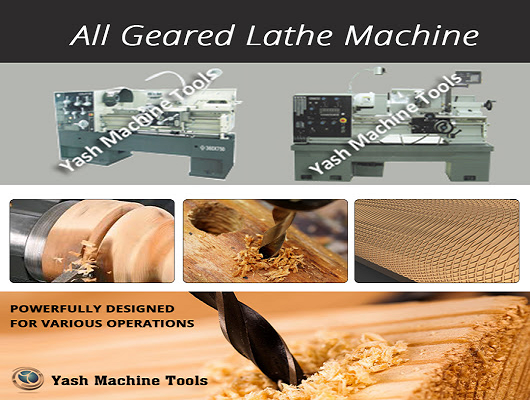Lathe Machines – Past, Present & Future
Lathe is an effective machine that has several applications. Although, the effectiveness of this machine depends on several external factors starting its from holding ability. It needs to hold the work piece in a firm manner, ideally using a vice clamping mechanism of some kind. This needs to be calibrated for precise measurements.
Basic working principle of the lathe machine is that it holds a work piece between two rigid supports. These are called by several names like face plate chuck plate, etc. The cutting tool is also held rigidly with a couple of supports. The cutting tool is introduced either in a parallel manner or at a right angle to the axis of the work.
What is a Lathe Machine?
In simple terms, it is a machine that rotates the work-piece around an axis of rotation. There are several functions it is capable of doing with the help of these actions, including cutting, sanding, knurling, drilling, deformation, facing.
This is one of the oldest machines around that has several common applications like cutting, knurling, etc. It is popular all over the world and several industries too. It has a great many applications and has the ability to produce a three dimensional surface as well.
Applications of a Lathe Machine
There are several types of lathe-machines available, for example, there is the light duty lathe machine, medium duty lathe-machine, heavy duty lathe-machine, extra heavy duty lathe-machine, CNC lathe-machine, etc. Each different type of lathe-machine has a different application. It has several applications in power plants, paper mills, steel rolling mills, ship building, workshops, textile industries, oil mining industries, electrical and electronic industry as well as the automotive industry.
History of a Lathe Machine
A lathe is a tool that dates back all the way to the 3rd century BC in ancient Egypt. There is also strong evidence that it was a tool the Mycanean Greek implemented in some form during the 13th and 14th century BC. There is a painting of a lathe from the 3rd century and several turned artifacts from the 6th century BC.
Besides, this is also further evidence of this machine found in a Etruscan tomb in Northan Italy in the form of fragments of a wooden bowl and in modern day Turkey in the form of two flat wooden dishes with decorative turned rims. The Chinese are also have known to use rotary lathes of some kind in ancient times like 400 BCE. Such machines were implemented on an industrial scale at those times to sharpen tools and weapons.
This was very important during the industrial revolution since the lathe machine is after all called the mother of all machine tools. The lathe machine too was the first machine tool which led to the invention of several other machines tools subsequently.
The lathe machines were mechanically driven up till the late 19th century; after which they were replaced with electric motors.
Advances in Lathe machines
Further advancements have been made in lathe machines with introduction of a computerized control panel. These lathe machines are only expected to get tougher in the future. They will be designed for higher precision and lower production cost.
The future holds many good things and advancements for the lathe machine and all other machines as well. This includes technologies like next generation computer numerical controls (CNC), virtual reality, advancements in CNC programming, CNC intelligence as well as automation and 3D printing.
The recent advancements in technology means many types of 3D printers are now easily available. They also use precision motion control and feedback technology that helps improve quality and speed.
- Maintenance Tips for Vertical CNC Milling Machine in Iran’s Harsh Industrial Environment
- Market Potential for CNC Lathe Machines in South African Countries: Trends & Insights
- How Saudi Arabia’s Manufacturing Industry Rely on All Geared Radial Drilling Machines?
- Why All Geared Lathe Machines are Gaining Popularity in German Industry?
- Top Applications of Horizontal Boring Machines in Australian Manufacturing Industry
- The Growing Demand for All Geared Lathe Machines in Global Markets




